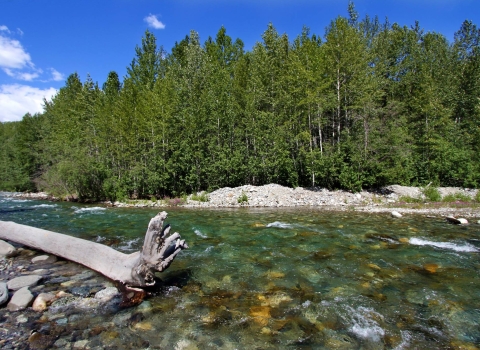Today the U.S. Fish and Wildlife Service (Service) Mountain-Prairie Region recognizes two individuals for their exceptional efforts to conserve and protect the nation’s rarest fish, wildlife, and plants. Randy Matchett, a supervisory wildlife biologist at Charles M. Russell National Wildlife Refuge in Montana, and Paul E. Marinari, a senior curator at the Smithsonian’s National Zoo and Conservation Biology Institute, have been named the 2018 Recovery Champions for their work in recovering the endangered black-footed ferret.
“The level of commitment that Randy and Paul have demonstrated to black-footed ferret conservation is inspiring,” said Noreen Walsh, Regional Director for the agency’s Mountain-Prairie Region. “Wildlife is our profession and our passion, so I’m pleased to have the opportunity to recognize the outstanding achievements of these two individuals who have been instrumental in making black-footed ferret recovery one of the most successful conservation stories in North America.”
Throughout his career, Service biologist Randy Matchett has greatly expanded the scientific community’s knowledge of sylvatic plague management and wild preconditioning in black-footed ferrets. Matchett’s influence stretches far beyond the boundaries of C. M. Russell National Wildlife Refuge and the National Wildlife Refuge System as a whole. His work at the black-footed ferret reintroduction site on UL Bend National Wildlife Refuge in Montana aided the establishment of successful reintroduction sites in seven other states. Matchett has also taken innovative steps to address the most significant challenge to black-footed ferret recovery: sylvatic plague. An automated manufacturing and distribution process for a plague vaccine and systemic flea control developed by Matchett has enabled wildlife managers to accomplish plague management on a larger scale. His accomplishments represent an impressive “start to finish” process of gathering scientific knowledge, implementing research findings in the field, and sharing the results of his work with others.
Currently a senior curator for the Center for Species Survival at the Smithsonian’s National Zoo and Conservation Biology Institute, Paul E. Marinari has shown a consistent vision of what is needed to achieve recovery of the black-footed ferret while maintaining the highest standards for scientific rigor. Marinari served as the on-site director of the National Black-footed Ferret Conservation Center and remains the longest-standing studbook keeper for the species. Some of his significant achievements include: the expansion of the captive breeding program into a large, stable, genetically viable population from the last remaining individuals; establishment of new, successful reintroduction sites; and advances in the science of husbandry, pre-conditioning, and reproduction. Under his care, the program prospered and thousands of kits were successfully born, reared, and released into the wild.
The Recovery Champion awards program began in 2002 as a one-time recognition for the achievements of Service staff members in conserving listed species. However, in 2007, the program was expanded to honor Service partners as well, recognizing their essential role in the recovery of threatened and endangered species.
The mission of the U.S. Fish and Wildlife Service is working with others to conserve, protect, and enhance fish, wildlife, plants, and their habitats for the continuing benefit of the American people. For more information on our work and the people who make it happen in the West, For information about all of 2018’s Recovery Champions nationwide, please connect with us on Instagram and Facebook, follow us on Twitter, watch our YouTube channel at and download public domain photos from Flickr.



